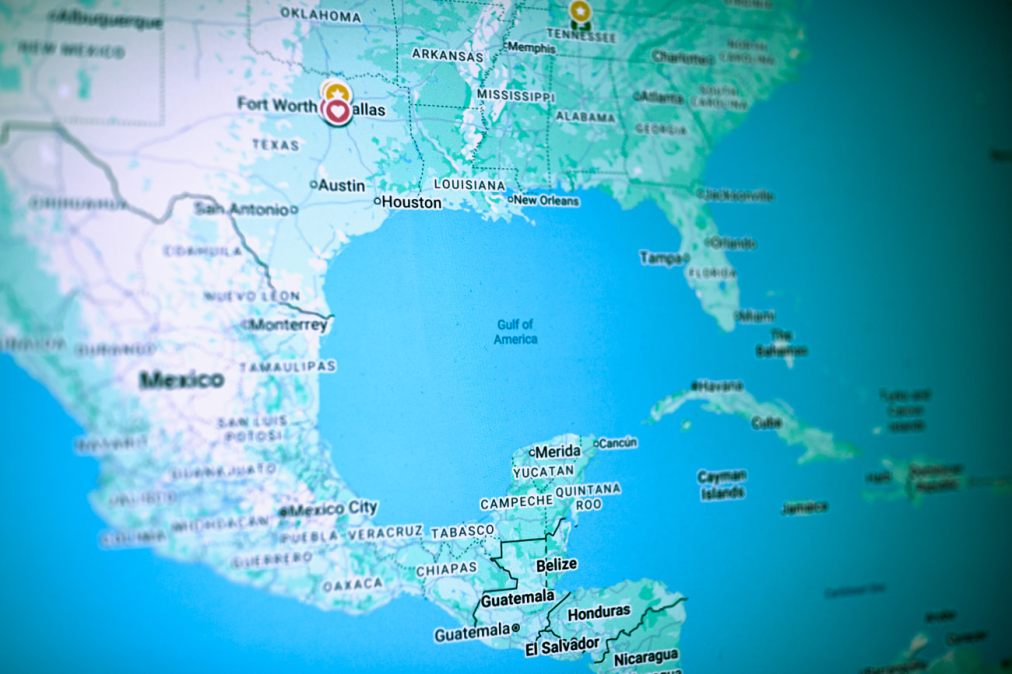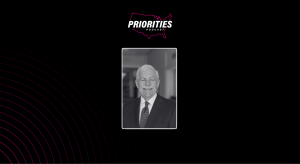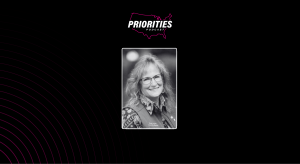Government’s ancient tradition of renaming things continues

The technology office under Nevada Gov. Joe Lombardo took to LinkedIn last week to make a “big” announcement: No longer would the state’s technology department be called the Office of the Chief Information Officer. Instead, it’s now the Governor’s Technology Office.
The new name is in part intended to reflect the office’s larger purview, following a minor reorganization in 2023 that elevated the state CIO into the governor’s Cabinet. The technology office has since then served the state’s entire executive branch, and the new name is seemingly designed to alert those both inside and outside of the state government to that fact.
And the apostrophe, of course, indicates ownership — it’s not just any technology office, but the governor’s.
The state’s press materials make much of the change, mentioning the importance of the agency’s “strategic focus” and giving assurance of the continuation of the state’s “service-level agreements.” It’s “the team you trust” but with “new email signatures.” In other words, it’s just a name change, which invites the obvious question: Why bother?
Last February, Timothy Galluzi, the state’s chief information officer, testified before the state Senate and provided one reason for the change as he pointed to elected offices like those of the state treasurer, attorney general and controller.
“My agency stands apart from the rest as the only one that is named after the principal leader that is not elected by Nevadans,” Galluzi said. “I feel that that is a sacred distinction and a significant justification for requesting this change.”
But Nevada is hardly alone in its rebranding efforts. Constantly renaming each office and initiative, while minutely curating the messaging behind every such decision, is woven into government’s essence. Just as agencies don’t buy things, but “make investments,” and just as they don’t work together, preferring always instead to “collaborate,” the names behind their agencies represent some of the most connotative political signals on offer. President Donald Trump last month mused about reverting the Defense Department to its old name of the War Department, which was last renamed in 1947 to align with evolving global sentiments following the Second World War.
Government branding is often a reflection of the interests and aesthetic preferences of those who make the changes. The former Digital Defense Service inside the federal government’s Office of Management and Budget had a penchant for borrowing from Star Wars lore. It had the System for Insider Threat Hindrance, or SITH, and the System for Automated Background Evaluation and Review, or SABER. The Digital Defense Service itself was swallowed this year by a notorious rebranding effort when it was reorganized under the United States DOGE Service, an entity responsible for much rebranding.
Government brands are sometimes backed by practical motivations, or they can be for the purpose of standing out for their social, political, economic or emotional valences, said Staci Zavattaro, a professor of public administration at the University of Central Florida who specializes in local governments’ branding efforts.
“Public sector branding is really a governance strategy that’s all about differentiation,” Zavattaro said. “And it really depends on what the agency wants to differentiate for and to what audience and for what purpose. Who is the verbiage for? That’s where it’s so different sometimes than what happens in the private sector, because those questions aren’t existential ones. They’re very practical ones.”
Sometimes agencies are trying to shake off the reputation left by a predecessor and the rebranding is intended to signal a substantive change. Florida’s state technology agency began in 2001 simply as the State Technology Office and then was eliminated several years later after the legislature refused to continue funding it, despite the objections of then-Gov. Jeb Bush. It was, over the next 20 years, replaced by the Agency for Enterprise Information Technology, then the Agency for State Technology, then the Division of State Technology and then the Florida Digital Service, though there are efforts today to change it again to become the Agency for State Systems and Enterprise Technology, or ASSET.
But unlike private companies, government agencies mostly don’t have to compete with each other or wow anyone with their branding. There’s only one place to get a driver’s license or parade permit, and people will continue to apply for those things, whatever the offices that issue them are called or what their waiting rooms look like. But unlike private companies, which are mostly oriented around pleasing their customers, governments, in the United States at least, are beholden to everyone.
“If you think of your favorite brand of dish detergent, laundry detergent, technology, there’s reasons we pick them,” Zavattaro said. “It might be sometimes very emotional — maybe your grandmother used Tide so you’re going to pick Tide. And it’s an economic decision sometimes, as well. It saves us time in the grocery store. We could be in the detergent aisle [a long time] if we really wanted to be perfectly rational actors and figure out what’s the best detergent, but in the public sector, there’s so many different audiences.”
In trying to please, or by becoming tangled in their own histories, governments sometimes make curious naming choices. An effort led by a group of Maryland universities and state agencies that used smartphones to track passengers’ travel patterns to inform transit policies called itself “Be an Advocate for pubLic TransportatiOn,” or BALTO, obliterating the limits of plausible initializations. Virginia once created a program called VIP, a nested acronym that stood for the VITA Innovation Program, VITA referring to the Virginia Information Technologies Agency.
Such ornate names are common in the public sector. Trenton, New Jersey, clearly put the acronym first when it created the Mobility & Opportunity: Vehicles Equity System (MOVES). The Texas A&M University System called its technology campus RELLIS to represent its six core values: respect, excellence, leadership, loyalty, integrity and selfless service.
But while some branding efforts are arguably the result of overthinking, others might have benefitted from another pass around the conference table. Those who named the National Association of State Technology Directors likely did not foresee their acronym becoming a common industry punchline. And Drake University in Des Moines, Iowa, might have thought better in 2010 of unveiling its catchy new campaign designed to attract more students: D+. (The school backed off the idea within weeks after receiving much public criticism.)
Barry Bozeman, a professor of technology policy and public management at Arizona State University, said that throughout his work studying government reorganizations, and his own time working for the National Science Foundation, the biggest renaming effort he ever saw was at his own institution. In 2002, a successful professor and university administrator named Michael Crow became ASU’s new president. Crow thought American universities were being too selective in who they admitted and too narrow in how they taught subjects. He started shaking things up and, Bozeman remembered, some faculty didn’t like it. Some of them even quit.
“He renamed almost every unit in the entire university,” Bozeman said. “And a lot of the names, people laughed, like: ‘That’s silly, what the hell does that mean?’ But if you look at the organization chart there was no longer a sociology department. There’s no longer a political science department. There’s no longer an anthropology department.”
Instead, departments at Arizona State University got names like the School of Human Evolution and Social Change and the College of Interdisciplinary Sciences and Arts. The university also started letting more students in. Today it enrolls more than 183,000, making it one of the largest universities in the nation. In other words, Bozeman said, it wasn’t just silly name changes — there were substantive policy changes behind it all. Today, Crow is recognized for having pioneered what’s now known as the New American University model, a successful, if controversial, way of providing higher education.
“What he was trying to signal was shaking up the university fundamentally,” Bozeman said. “And he did. One of the things you see is it’s been voted one of the most innovative universities like five years in a row. And some of it’s bullshit, things aren’t any different than they were, but a lot of them are very, very different. The changes in names signal, wow, this is going to be a big deal.”
Nevada’s budget shows that to rebrand the technology office cost $1,814, the price of a lower-end Apple MacBook Pro. It’s not a lot of money, but it was important enough that people ostensibly held meetings and circulated memos about why the rebranding was important. Did the governor order the change? Was the CIO’s office not commanding enough respect from other agencies despite its expanded authority? It’s a common story in states that have recently centralized their IT functions.
Bozeman said he remembers many years ago hearing such complaints from IT agencies in Georgia and Missouri after their IT centralization efforts. After such reorganizations, agency staff often get worried that the new centralized IT authority won’t be “sensitive to their parochial needs,” he said.
Galluzi, the state CIO, did not respond to a request to comment before this story’s initial publication. But after its publication, Michael Hanna-Butros Meyering, the technology office’s chief communication and policy officer, told StateScoop that Nevada’s IT model isn’t centralized, but federated, and that the CIO’s role is to provide IT leadership and support to agencies — to work “with them,” not do things “to them.” He said the name change reflects the office’s reorganization, which comes with numerous benefits, including Cabinet-level accountability and the ability to make faster enterprisewide decisions.
But while some name changes signal substantive policy shifts, others are just attempts to ride the wave of the latest trend. Bozeman said he thinks “chief information officer” is starting to sound a bit old-fashioned. Maybe it was decided that Governor’s Technology Office just sounds better. In the auto industry, GTO stands for Gran Turismo Omologato, a prestigious Italian racing designation.
“It makes organizations and programs more memorable,” Bozeman said of catchy acronyms. “For example, think about the SNAP program. I don’t even know what the hell it stands for, but it certainly sounds a lot better than food stamps.”
July 8, 2025: This story was updated to include additional information and comments from the Nevada Governor’s Technology Office.



